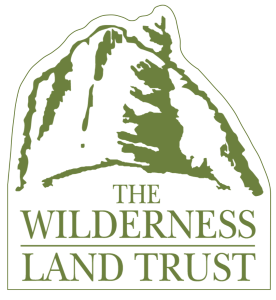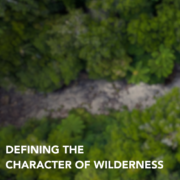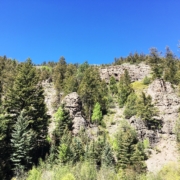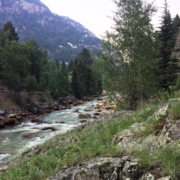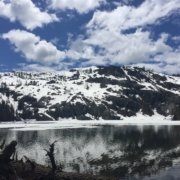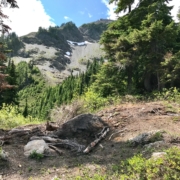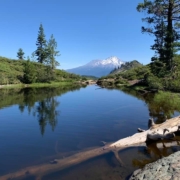What it means to keep our wilderness wild: defining the character of wilderness
October 6, 2023-
When asked what wilderness is, many people will quote some portion of the 1964 Wilderness Act’s definition of “A wilderness, in contrast with those areas where man and his works dominate the landscape, is hereby recognized as an area where the earth and its community of life are untrammeled by man, where man himself is a visitor who does not remain.” For many of us who have spent time in wilderness, developing our own personal relationships with it, our definitions will also cross into how we have experienced wilderness, how we love to explore it, or how it makes us feel.
In the Trust’s work to protect wilderness, we often refer to wilderness character in terms of how development of an inholding would affect the wilderness character of the lands around it, or how we will work to restore lands to their wilderness character before they are transferred to public ownership. It’s a term that is often used as a catch-all for everything from ecosystem health to solitude. But the Wilderness Act actually goes on to define wilderness character with five tangible and measurable characteristics:
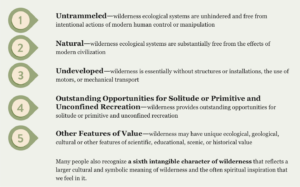
Beyond defining these wilderness characteristics, the law also sets a requirement for the managing agency to maintain or improve these characteristics in a wilderness area from the time of its designation forward. In the last 15 or 20 years a standardized system for monitoring and evaluating wilderness characteristics has been developed. For each of these characteristics is a set of indicators that can be assessed for a negative change, no change, or positive change for an area year after year. These indicators range from actions authorized by the federal land manager that intentionally manipulate the biophysical environment for untrammeled character, to human-caused change to air or water quality for natural character, to the presence of inholdings for undeveloped character. Observing trends in these indicators can help to identify stewardship needs and successes.
For the vast majority of wilderness visitors, these indicators fade into their overall experience of wilderness. We may notice signs of their change like new fire rings popping up along popular backpacking routes through the years, or our phones pinging for the first time with incoming messages as we enter a new patch of cell service on a familiar trail. But it is how wilderness exists outside of our experiences of it, in our absence, that is really at the heart of its character. It is what is left behind when we, the visitors, go: the ecological integrity, free flow of natural cycles, and the existence of a few last corners of the earth not shaped and controlled by human civilization.
Learning more about wilderness character monitoring here.
